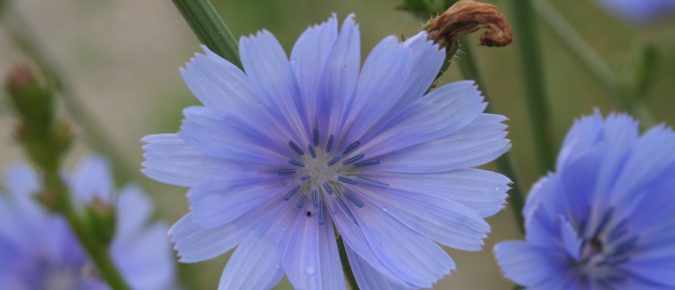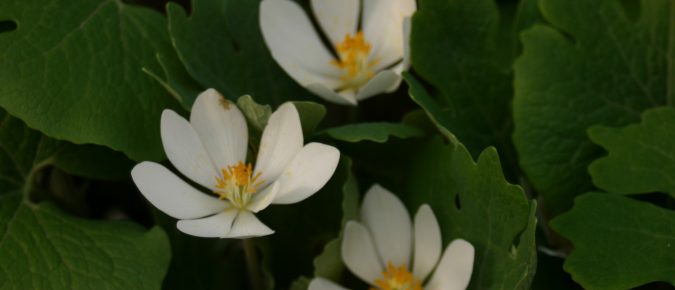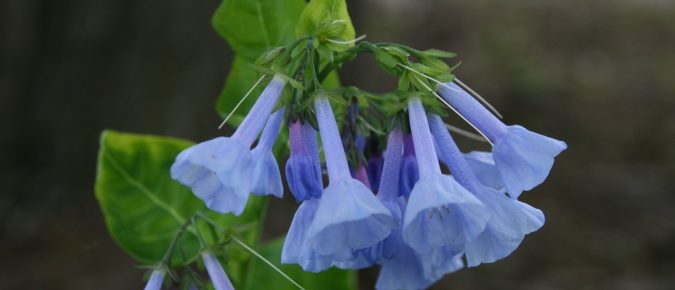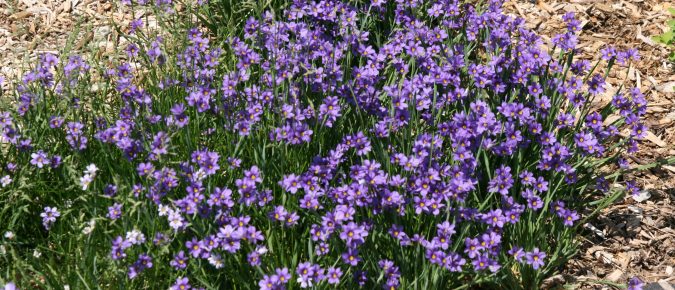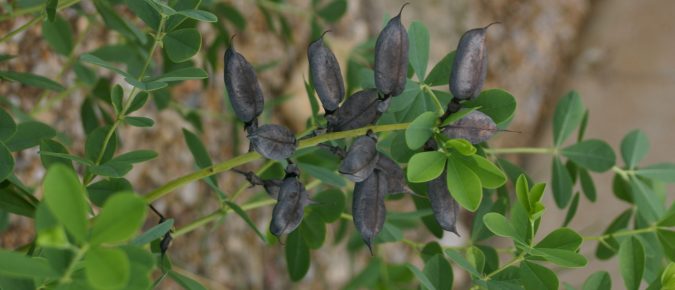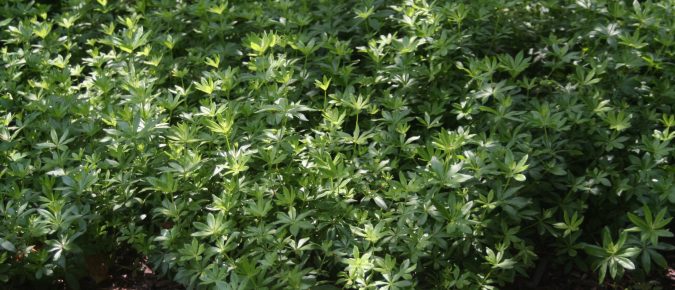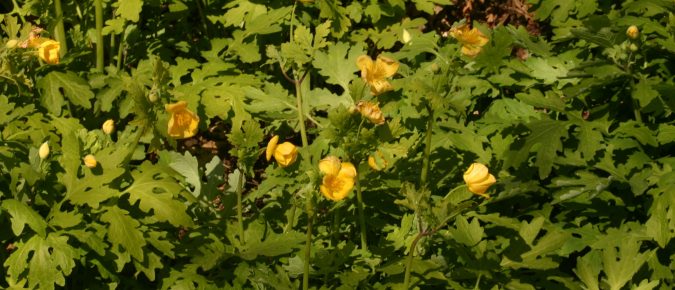Do you recognize those blue flowers along the roadside that will keep blooming until frost (if not mowed off)? That’s chicory, an escaped, naturalized European plant that has been used for food and forage since ancient times, although most Americans know it just as a weed. To learn more about Chicorium intybus, read this article…
With big yellow flowers, the Erythronium hybrid ‘Pagoda’ is a great addition to shady gardens. Developed from two species of native North American wildflowers, this spring bloomer will naturalize in woodland gardens and combines well with bleeding heart, columbine and hostas. To learn more about this garden ornamental, read this article…
Bloodroot is one of the first wildflowers to open its bright white flowers in Midwestern woodlands. This native plant is at home in deciduous forests and shade gardens with well drained soils. Learn much more about this spring wildflower in this article.
Solomon’s seals are woodland plants with arching stems. There are a number of both native and exotic species and cultivars that are used primarily as foliage plants in ornamental shade gardens (as their small hanging flowers are attractive, but relatively inconspicuous). To learn more about the genus Polygonatum read this article…
Cardinal flower is an unmistakable brilliant red perennial for moist spots. This native perennial is found in moist open woods, streambanks and marshy areas and makes a great addition to the landscape. Learn more about this great plant with flowers that are irresistible to hummingbirds in this article.
Virginia bluebells are spring blooming herbaceous perennials that disappear for the rest of the year. With pink buds and true pale blue flowers, this plant combines well with daffodils and tulips. Combine with other perennials to hide the spaces left behind when the bluebells go dormant. You can find out a lot more about this native woodland wildflower in this article.
The genus Sisyrinchium is a large group of annuals and perennials with narrow leaves that produce a grass-like appearance. Another common feature of many species is the blue to purple flowers with yellow centers – prompting the common name of Blue-eyed Grass. To learn more about this group of plants native to the Americas, read this article…
Are you familiar with the wildflower Uvularia grandiflora, one of the first woodland perennials to emerge in the spring? Also planted as an ornamental with understated pendant yellow flowers, this native plant is at home in the informal, shady garden as well as the woods. To learn more about this relatively uncommon plant, read this article on bellwort…
Baptisia australis is a great, under-used herbaceous plant. This tough, but beautiful, prairie native has been chosen by the Perennial Plant Association as their Plant of the Year 2010. Purple-blue flowers and foliage that remains attractive throughout the season make this a nice a specimen plant or a good addition to the perennial border. Read more…
Sweet woodruff is an attractive groundcover for moist, shady spots, producing tiny white flowers in the spring. This European plant was used as an herbal remedy for a variety of ailments, and the dried leaves and flowers smell like freshly mown hay. If you want to learn more about this herbaceous perennial, continue reading…
Celandine poppy or wood poppy will soon be opening its bright yellow flowers in shade and woodland gardens throughout the area. Learn more about this eastern US native perennial in this article…
Geum triflorum is an attractive little prairie plant that easily makes the transition to a perennial border or rock garden to charm you with both its nodding pink flowers and wispy seedheads. Learn more about this interesting native plant in this article…

